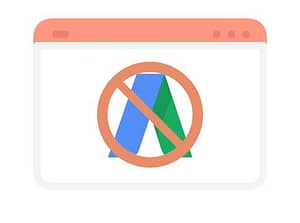There’s a word that explains the main goal of a well-executed marketing strategy: targeting. It’s this magical word that makes the right customers come to your business or service. To achieve this, it’s ideal to know as much as possible about your target audience and persona and apply these concepts in your strategic planning.
However, there’s a lot of confusing information on the subject, which makes many people question what each of these concepts is and if there’s really a difference between them.
If you want to learn more about the target audience and persona, their concepts, differences, and how to apply them to your business, you’re in the right place.
Read as well: 10 reasons why email marketing is so important
What is a target audience?
A target audience is extremely important information for directing your company’s marketing efforts and compiling the social, demographic, and economic situation of those who will consume the service or product.
It is, in a way, one of the first steps in a marketing campaign, and it’s important to master this concept to work well with both organic and paid traffic.

Most of the time, you’ll find quite precise data about consumers in defining the target audience, such as education, gender, buying habits, age, marital status, profession, region of the country they live in, and more. These are the basic pieces of information; some people work with even more detailed data as time goes on.
Here is an example of a target audience in practice:
Final product: Hair products.
Target audience: Women, 25 to 35 years old, with a college education, monthly income between R$3,000 and R$5,000, and frequent purchases of hair products.
Visualizing it makes it much easier to understand, doesn’t it?
The benefits of pinning down a target audience and when to use it
Well, one of the standout benefits is the precision it provides to advertisements (paid traffic) and organic traffic campaigns. This is because the data helps us reach those genuinely interested in our product or service, thus optimizing time and financial resources.
Another interesting benefit is the ease it brings when pricing your product or service, defining which channels your campaigns will perform best on.
The use of the target audience mainly happens in the early stages of campaigns and the creation of brands and products. This is because it’s an initial tool that requires less research to put into practice and offers an overall view of the type of customer you want to reach and who’s interested in what the company offers.
What is a persona?
On the other hand, persona or buyer persona is a fictitious consumer profile that simulates the ideal customer of the company. Here, the data used are real and collected after thorough research, unlike the target audience, which is a simulated expectation.

The purpose of the persona is for the company to see more clearly who its customers are and their needs, and thus, produce more precise strategies. Therefore, the persona consists of more detailed data, with more empathy and accuracy, as if you were dealing with a real person.
In defining the persona, you’ll commonly find elements such as a fictitious name that helps promote empathy within the team, profession, lifestyle, buying habits, a summary of the persona’s routine and everyday life, hobbies, values, doubts, ambitions, desires, and pain points that your product or service can address.
To make it easier to understand the construction of a persona in practice, it looks like this:
Rejane, a 35-year-old woman, is a lawyer and works in the same field as a public servant. Earning between $7.000 and $10.000 per month, she'd like to know how to make extra income without having to open a business registration, which isn't allowed while working as a civil servant. In her spare time, she enjoys streaming and reading, and her favorite purchases are books and perfumes. She follows several female entrepreneurs on social media. She lives in Seattle, Washington, in a well-located neighborhood.
As you can see, the concept of a persona and the provided data are much more comprehensive. Think about it like a specific tree in a huge forest you’ve been cultivating.
The benefits of a persona and when to use it
Developing your business’s persona not only helps in targeting the right customers (or even bringing them to you) but also in creating more precise strategies and campaigns, ensuring a growing return on investment (ROI), and building a more sustainable business with each passing year.
In addition to these advantages, it’s important to know that the persona helps in correcting small communication gaps between your brand, company, or service and the customer.
In this sense, if you notice that persona X has a different buying behavior whenever campaign Y is launched, you can refine your future strategies to maintain lead retention. The persona can be used at any time, even as a reference when creating content. It’s essential for marketing campaigns, strategic planning, and content planning!
What’s the difference between the target audience and persona?
Hopefully, things are more clear for you now. While the persona provides many more details for your marketing strategies and campaigns, the target audience offers a general view of your customer. The persona tells a story about the customer, narrating the pain points your product can address, and the target audience is a more practical compass for quick actions.
You may also like: How to boost your public posts in 4 steps
Want to learn more about the subject to boost your business? Laços can help!
On our blog, you can find information and strategies here for free. But with us, you get everything you were missing to make your business take off.
Schedule a free online meeting with us, so we can get to know you better and understand what your business needs. We’ll be waiting for you!






